Do you want to make a curved projector screen but don’t know where to start? You’ve come to the right place! In this article, we will answer some of the most common questions about how to make a curved projector screen. We’ll provide helpful tips and advice on the materials you’ll need, the construction process, and how to get the best results. So whether you’re a first-time builder or an experienced DIYer, read on for all the information you need to create your own curved projector screen!
What is a Curved Screen Projector?
Curved screens are typically used in home theater setups, where they can provide a more immersive movie-watching experience. However, they can also be used in business settings, such as conference rooms or classrooms.
There are two main types of curved screens: fixed and flexible. Fixed screens are made from rigid materials, such as PVC or aluminum. These screens cannot be moved or adjusted once they have been installed. Flexible screens are made from softer materials, such as fabric or plastic. These screens can be rolled up or folded, which makes them easier to transport and store. [1]
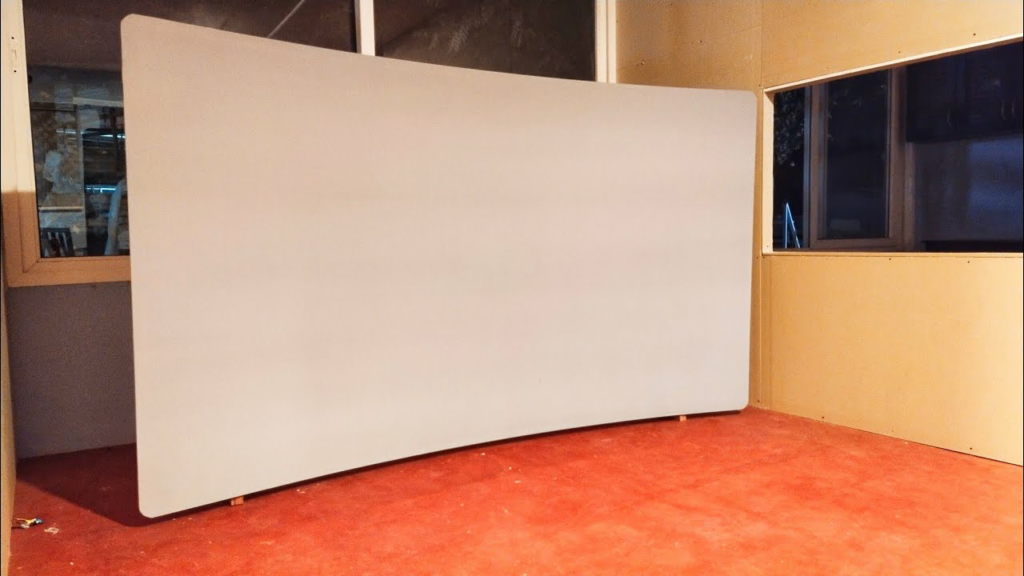
Do I need an a-lens projector with a curved screen?
If you’re looking for the best possible image quality, then yes, you’ll need an a-lens projector. The curved screen will help to focus the light from the projector and improve image quality.
However, if you’re not worried about image quality and just want a bigger screen, then a regular projector will suffice. You can still get a good sized screen with a regular projector, it just won’t be as big as it could be with an a-lens projector. [3]
What materials do I need for this?
You will need a black out fabric, a curved frame, and some type of projection material. Black out fabric can be found at most fabric stores and is relatively inexpensive. The frame can be made from PVC pipe or wood, depending on what you have available. Projection material can be anything from a white shower curtain to speciality projection screen fabric.
If you want to make a really professional looking screen, you can purchase a premade curved frame and tensioning system. These are not cheap, but they will give you a perfect curve every time. If you decide to go this route, make sure to get the correct size for your projector and materials. [3]
How to Make Your Curved Projector Screens
Step 1
The first step is to determine what curved projector screen size you need. This will be determined by the aspect ratio of your projectors, how far away from the screen you will be sitting, and how large of an image you want to project. Once you have these measurements, you can purchase a premade curved projector screen or make one yourself. [1]
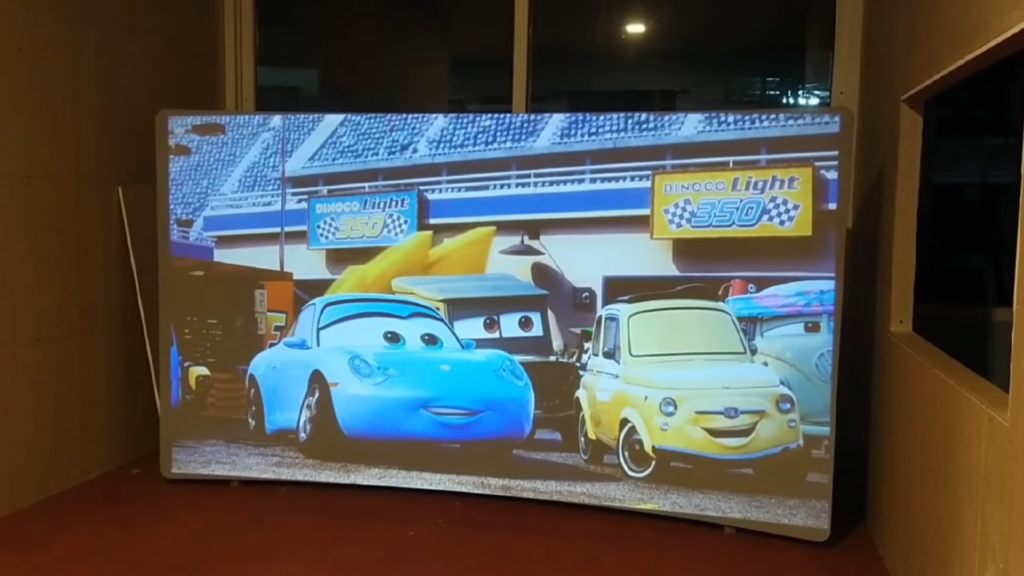
Step 2
The next step is to choose the right projector screen material. You’ll want to consider a few factors when making your decision, including:
- The surface of the material (flat or curved)
- The level of reflectivity (matte or glossy)
- The thickness of the material
- The color of the material (white or black)
- The price of the material
Once you’ve considered all of these factors, you can narrow down your choices and select the best projector screen material for your needs. [1]
Step 3
Now that you have all of your supplies, it’s time to make the screen! Begin by cutting your fabric to the desired size. Next, use a hot glue gun to attach the fabric to the frame. Be sure to smooth out any wrinkles or bubbles as you go. Once the fabric is secure, trim away any excess material. [1]
Now you’re ready to attach your newly made screen to the projector!
Step 4
Now that you have your screen all set up, it’s time to attach it to the projector. This part is pretty straightforward – just follow the instructions that came with your projector. In most cases, you’ll need to use some screws or bolts to secure the screen in place.
Once the screen is attached, you’re ready to start using your curved projector screen! Just make sure to adjust the position of the screen so that it’s properly aligned with the projector lens. Enjoy! [1]
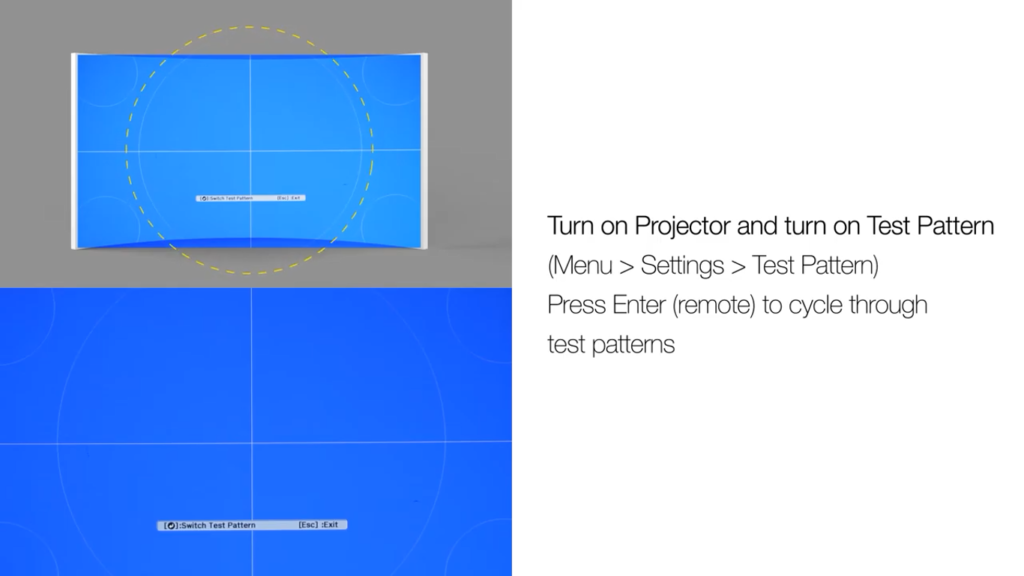
Advantages of Curved Screens
There are many reasons why you might want to consider a curved projector screen. Curved screens provide a number of advantages over traditional flat screens, including:
- Improved image quality: Curved screens help to reduce distortion and improve image clarity.
- Enhanced immersion: Curved screens create a more immersive viewing experience by wrapping around your field of vision. This can be especially beneficial for gamers or movie fans who want to feel like they’re right in the middle of the action.
- Wider viewing angles: Curved screens offer wider viewing angles than flat screens, making them ideal for large groups or family gatherings. [2]
Disadvantages of Curved Screens
While there are many advantages to curved screens, there are a few disadvantages that you should be aware of before making your purchase.
First, curved screens can be more expensive than flat screens. If you’re on a budget, a curved screen may not be the best option for you.
Second, curved screens can cause some distortion at the edges of the image. This is because the curve of the screen affects how light is projected onto it. If you’re watching a movie or playing a video game, this distortion can be distracting and even disrupt your enjoyment of the content.
Finally, curved screens require more careful calibration than flat screens. If you want to get the most out of your new screen, you’ll need to take the time to calibrate it properly. This process can be a bit daunting for first-time users, but there are plenty of resources available online to help you through it. [2]
Can a Curve Make us enjoy the Contents we Project more?
When it comes to watching a movie or playing a video game, the right environment can make all the difference. A good home theater set-up will include comfortable seating, dimmable lighting, and most importantly, a projector screen that enhances your viewing experience.
A curved screen is one way to improve your projection set-up and take it to the next level. But what are the benefits of a curved screen, and is it worth the extra effort? In this article, we’ll answer those questions and give you everything you need to know about how to make a curved projector screen. [3]
Does the Curved Display Immerse you in the Content?
The excitement of curved screens
The excitement of curved screens when they first launched was palpable. The idea of having a display that completely filled your field of view was mind-blowing, and the concept still is. But does the curved display actually provide a more immersive experience?
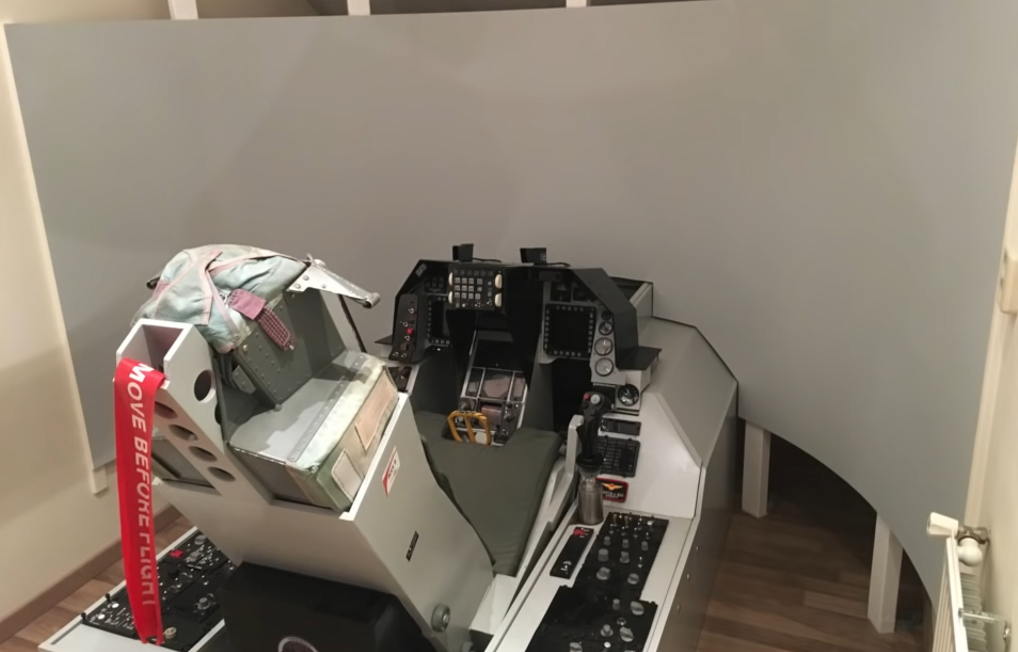
The answer to this question is complicated and requires a bit of explanation. To start, it’s important to understand that immersion is not just about filling your field of view. If that were the case, then VR headsets would be the most immersive displays on the market. But they’re not, because VR headsets come with their own set of issues that prevent them from being truly immersive. [2]
Which one do you have to choose?
There are two types of screens that you can use for your projector: a whiteboard or a blackboard. If you want to project onto a wall, then you will need to use a whiteboard. Blackboards are only necessary if you want to project onto a ceiling or other surface that is not white.
The next thing you need to decide is what size screen you need. The size of the screen will depend on the size of the room and the distance between the projector and the screen. If you are unsure about what size screen to get, then it is always best to err on the side of getting a larger screen. You can always trim down a larger screen, but it is very difficult to make a smaller screen bigger. [2]
FAQ
Are curved projector screens better?
The main reason people want a curved screen is for the immersive experience it offers. A curved screen puts you in the middle of the action and makes you feel like you’re right there in the thick of things. It’s also said to offer a more realistic viewing experience, as it mimics how our eyes actually see.
Some people find that curved screens offer a better viewing experience because they eliminate distractions at the edges of the screen.
Can you use a projector on a curved wall?
The short answer is yes! You can use a projector on a curved wall, provided you have the right screen. A curved projector screen will help to improve your viewing experience by creating a wider field of view and increasing the sense of immersion.
Why are projector screens curved?
There are several reasons why you might want to consider a curved projector screen. First, they offer a much wider viewing angle than flat screens, which is ideal if you have a large room or audience. Secondly, they can provide a more immersive experience, as the curve of the screen helps to draw your eye into the image. Finally, they tend to be more aesthetically pleasing than flat screens – especially if you have a high-end home cinema setup!
Are movie theater screens curved?
Yes, most movie theater screens are slightly curved. The curve is designed to improve the viewing experience by providing a wider field of view and minimizing peripheral distractions. However, the degree of curvature varies widely between theaters and even between different screens within the same theater.
Are curved monitors worth it?
The debate rages on whether curved monitors are worth the extra money. Some people swear by them, while others find them to be a waste of money. If you’re looking for a more immersive experience, then a curved monitor might be worth the investment. However, if you’re on a budget, then you might want to stick with a traditional flat-screen monitor.
There are a few things to consider before buying a curved monitor. First, make sure that your graphics card can support the higher resolutions that come with these monitors. Second, keep in mind that not all games and apps will take advantage of the curvature. Finally, decide if you want an ultra-wide or dual-curved display.
Why do movie theater screens have holes?
Do you know why movie theater screens have holes? It’s so that the sound can travel through them! That way, when you’re watching a movie, you can hear the dialog and music coming from all around you.
The same is true for curved projector screens. By having holes in the screen, sound can travel more easily around the room, giving you a more immersive experience.
Another benefit of having holes in your screen is that it helps to evenly distribute the light from the projector. This means that there won’t be any hot spots on the screen, which can be distracting.
What is Vistarama projection?
Vistarama projection is a new type of projection technology that uses multiple projectors to create one seamless image. This is perfect for creating a curved screen, as it allows the image to wrap around the screen without any distortion.
To create a Vistarama projection, you will need at least two projectors and a special software program. Once you have set up your equipment, you will be able to create an amazingly realistic curved screen that will make your movies and games look even better than before!
Useful Video: Build 120″ Inches curved projector Screen for FHD 1080p | 4k Home theater setup | Borderless | DIY
Conclusion
As you can see, there are many benefits to having a curved screen for your projector. Whether you’re looking for a more immersive experience or just want to get rid of those pesky hot spots, a curved screen is the way to go.
If you’re ready to take your movie-watching experience to the next level, then follow the steps in this guide and learn how to make a curved projector screen today! Thanks for reading! I hope this article was helpful. If you have any questions, feel free to leave them in the comments below. Bye for now!
References
- https://www.gadgetreview.com/how-to-make-a-curved-projector-screen
- https://homeaffluence.com/how-to-make-curved-projector-screen/
- https://wikiinner.com/how-to-make-curved-projector-screen/

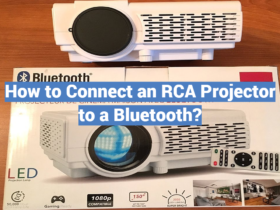
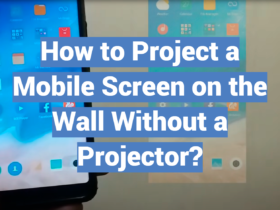

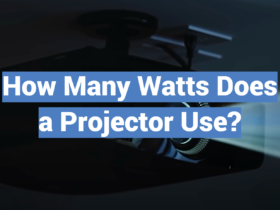

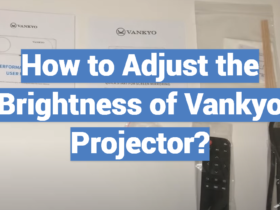

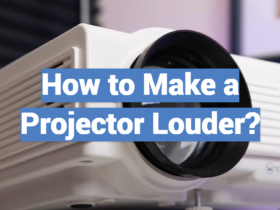
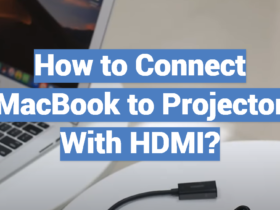
Leave a Review